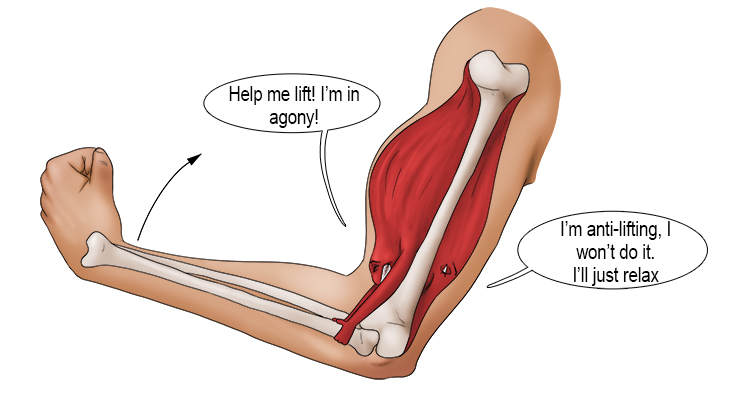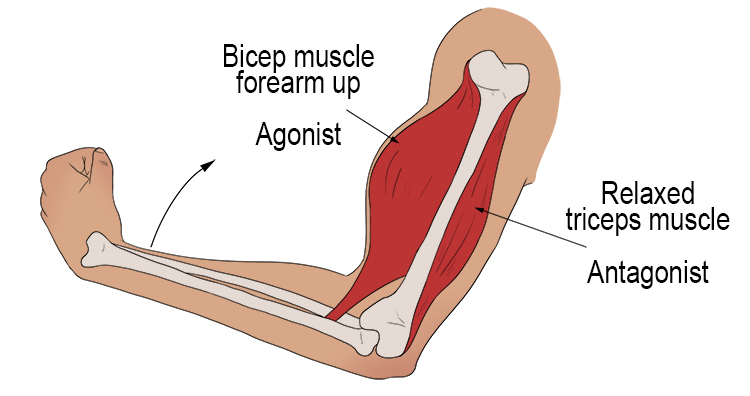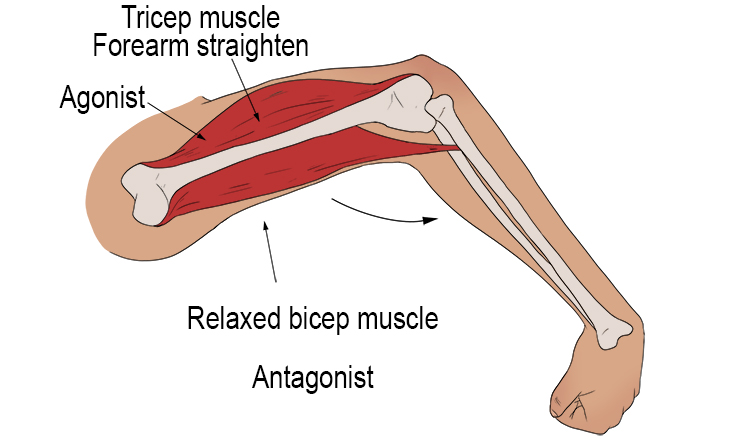Agonist Muscle and Antagonist Muscle
A simple way to remember the agonist and antagonist is to think of one muscle being in agony (agonist) when lifting something heavy. In contrast the relaxed muscle is anti-lifting (antagonist).

Muscles move our bones by pulling on them: they cannot push. This is why they work in pairs, with one muscle to move the body part and the other to return the body part back to its original position. Muscles that work like this are called antagonistic pairs.
The muscle that moves the bone is known as the agonist muscle, and the relaxed muscle is known as the antagonist muscle.
Example of how an antagonistic muscle pair works.






